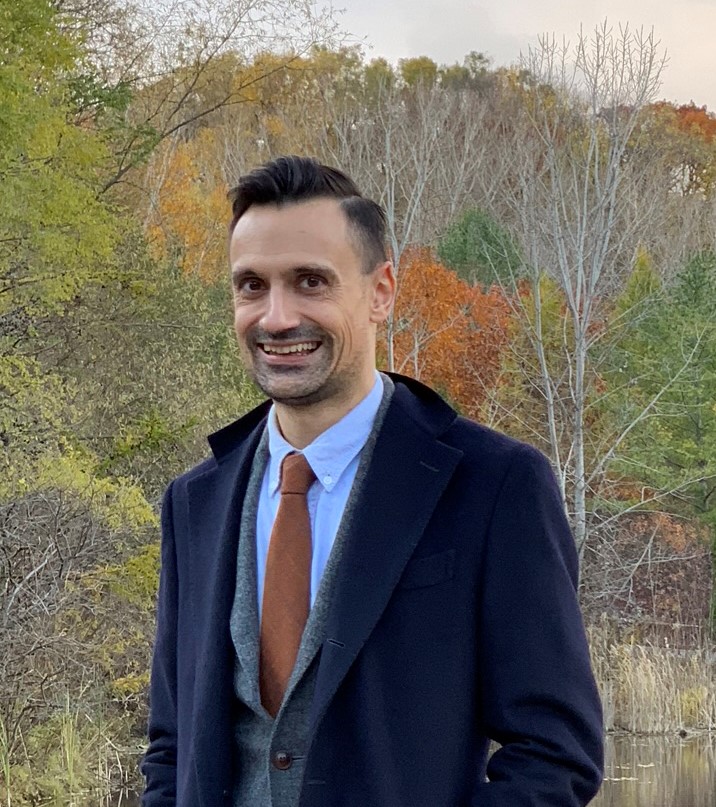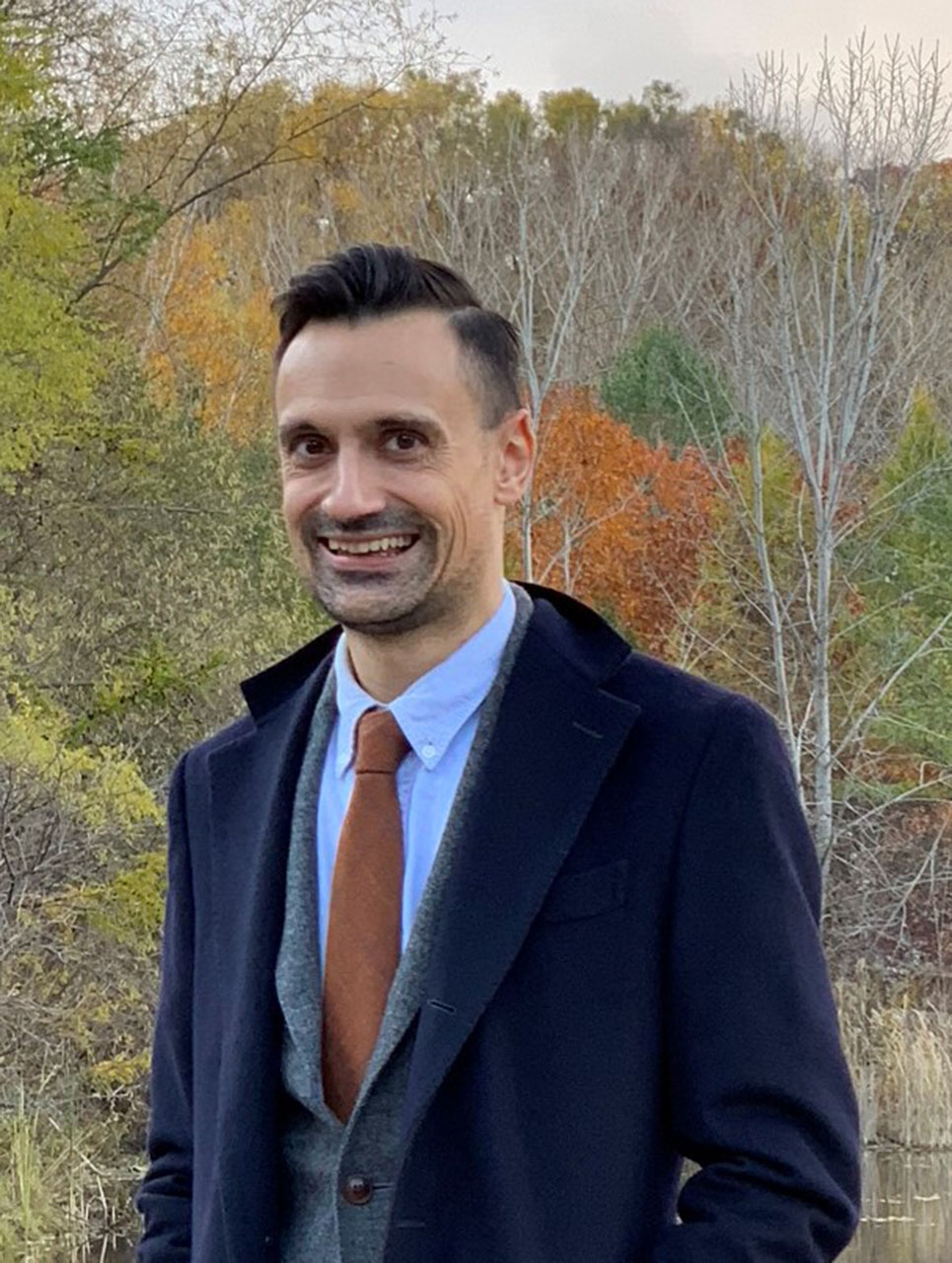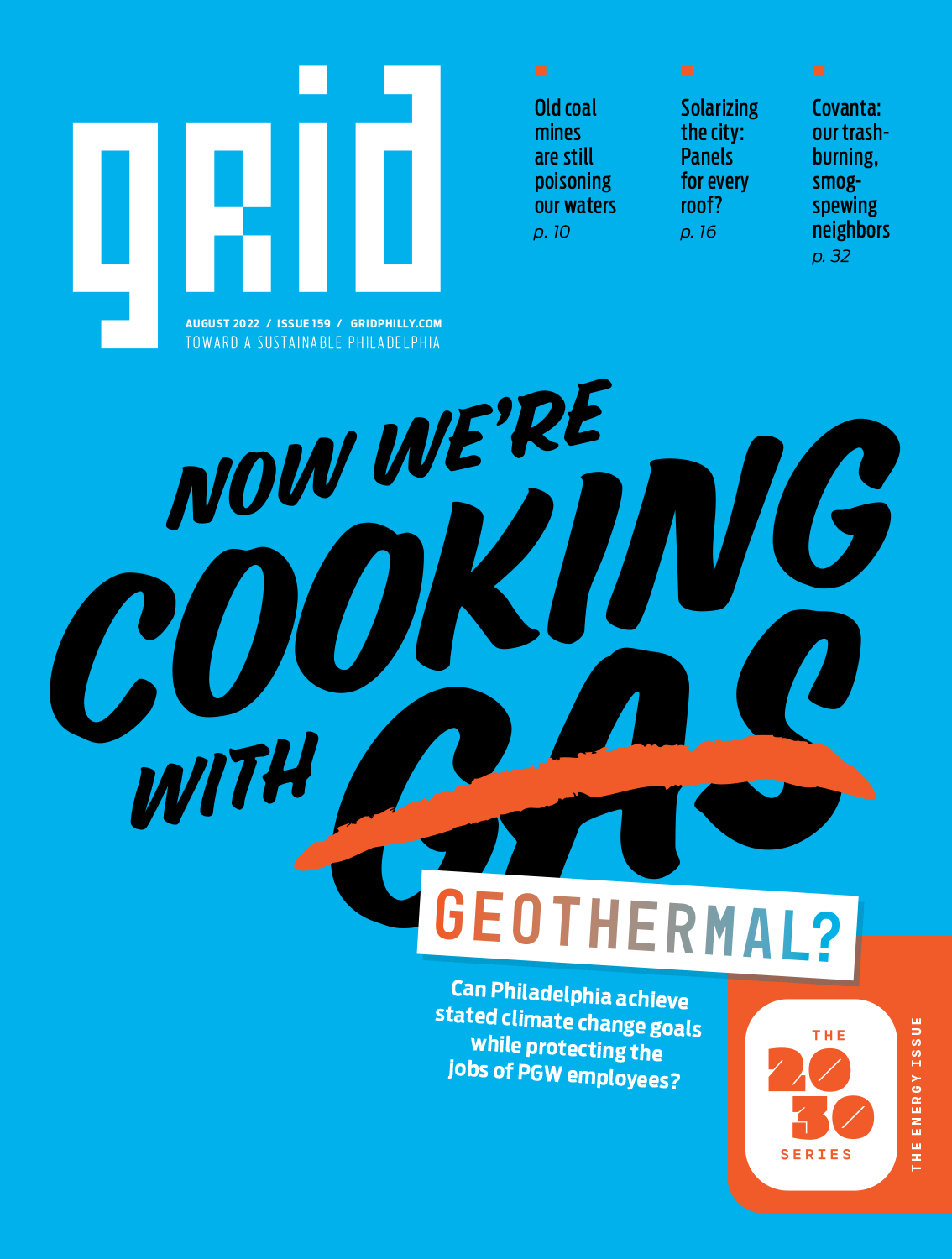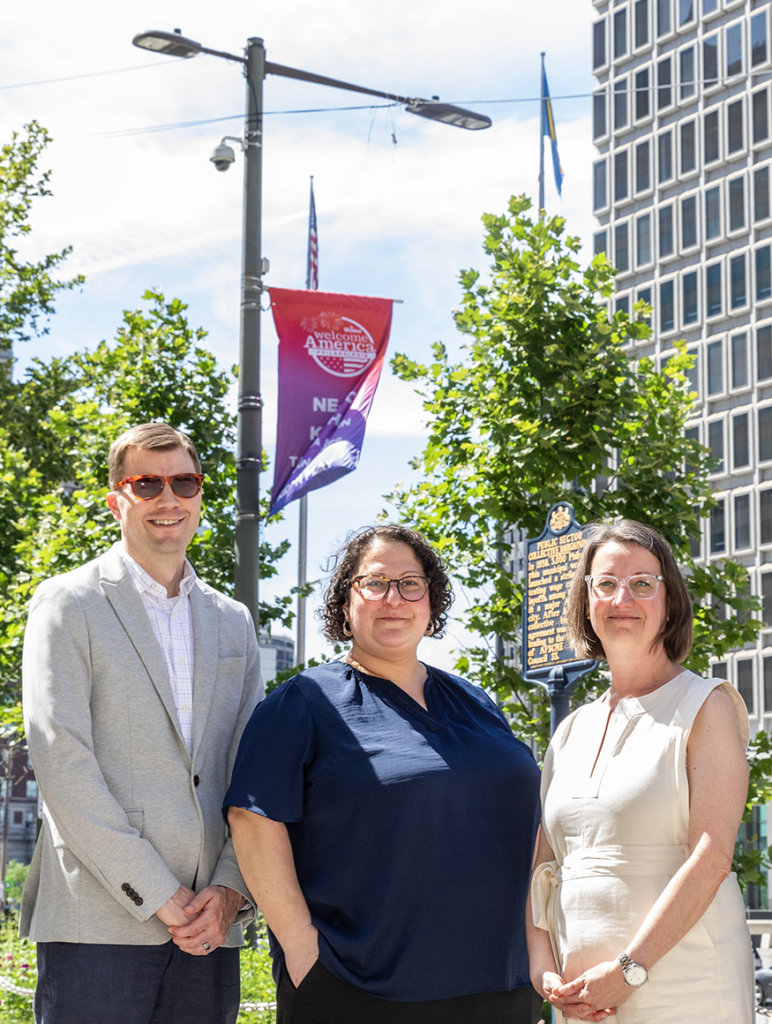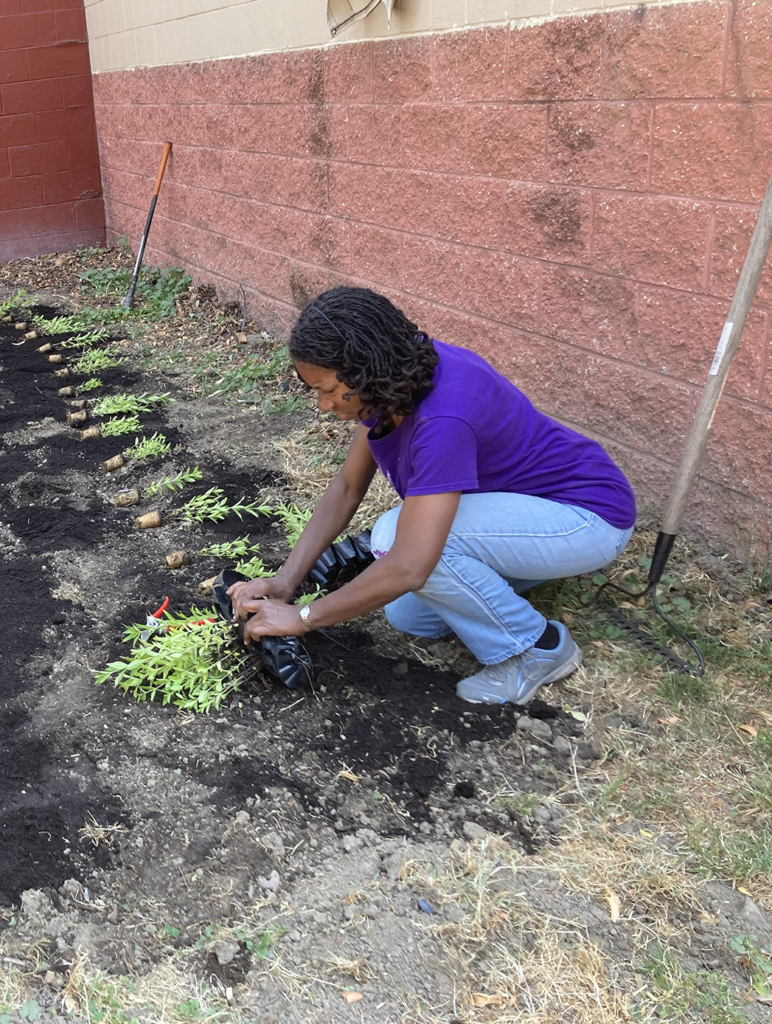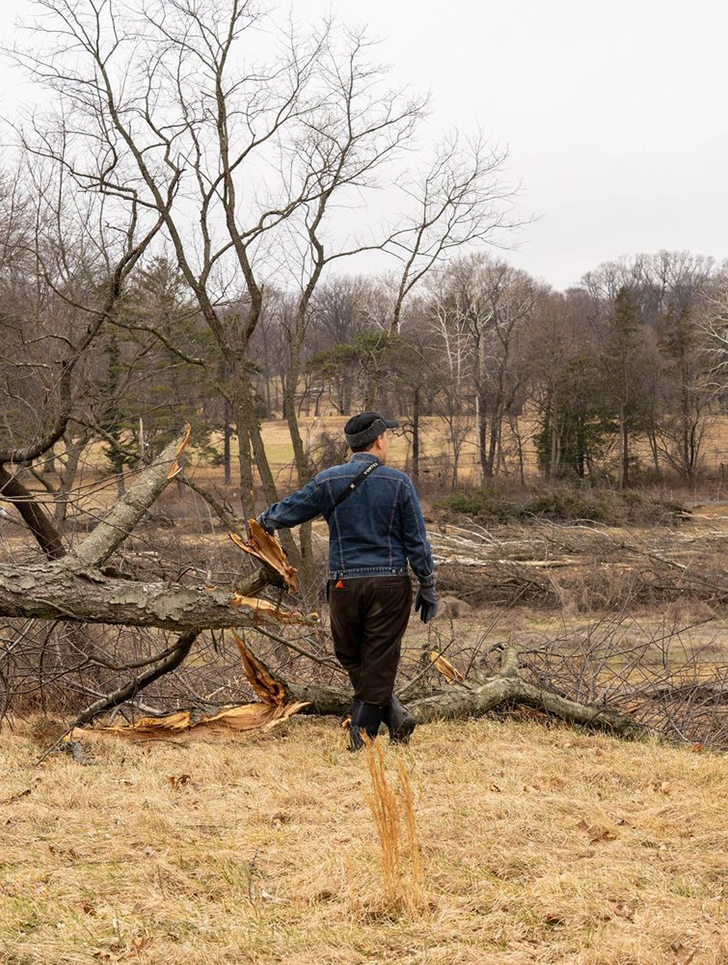This month Green Building United (GBU), a regional organization that fosters transformative impact in communities through green building education and advocacy, announced Rich Freeh as the organization’s new executive director. Before taking the position, Freeh spent seven and a half years with the Philadelphia Office of Sustainability working on clean energy planning and sustainability reporting. For the past two and a half years, Freeh worked at the Urban Sustainability Directors Network, a nonprofit that connects North American government employees working in sustainability offices to share best practices.
Grid’s Nic Esposito sat down with Freeh to discuss how his background in sustainable energy planning and national networks will influence his tenure at GBU.
This interview has been edited for clarity and length.
When the Green Building United executive director job came up, why did you decide to apply?
I really loved working at that national level with a lot of the partnerships that the Urban Sustainability Directors Network had at the time. The Global Covenant of Mayors is one of the big organizations out there, and what they do is they set the standards for how local governments and others report on sustainability and climate action.
One of the things that kept coming up in that process was how can we set these targets in different cities while still having it rooted in communities and equity? As I continued to have those conversations, I think what I realized was how important that local work was. After so many years of doing that with the City of Philadelphia, I may have sort of lost touch with how important that work was. And I think going to that national level really helped me realize how much I value that local perspective and the local work. So the opportunity to come back to the Philadelphia region to work at that local level again to be a bit more on the advocacy side rather than the local government side to still do the climate work I am so passionate about was a big reason for taking the job.
Given your wide range of experiences in sustainability, what about green building attracted you?
I started my work at the City of Philadelphia launching Philadelphia’s energy benchmarking program, which requires large buildings to report their energy and water use each year and was one of the early signature climate programs for the City under the Nutter administration. And so I’ve always had this recognition that buildings are a huge part of Philadelphia’s carbon footprint, and they’re a huge source of emissions. But the other thing about buildings, both big buildings and homes, is that they’re places where people spend their time and money. So when we talk about bills, we talk about affordability, and we know in Philadelphia right now there’s a housing affordability crisis. We know that there’s so much opportunity and so much need to improve the quality of our housing stock. And we know that there continues to be new construction. So we’re sort of at this really interesting point I think in the city and in the region where buildings are more important than ever, not only from a climate perspective, but from a health and equity and a financial perspective. So with all of that in mind, I was really excited to come back to that building work and to local work with this lens of, how do we grow the work that Green Building United is doing? I want us to reach beyond some of what I think we’re best known for, which is our work on really high efficiency homes and larger buildings, to really think about how we grow what we mean by “green building.”
So what does that broader definition of “green building” look like in Philadelphia and what’s your vision to achieve it?
Green building is an industry that in a lot of ways is growing and a lot of ways is changing. So you look at a lot of the folks who are traditionally in what we consider green building type jobs like architects or engineers. They are thinking about energy modeling or they’re thinking about high performance systems. These people want to be in places like the Philadelphia region where there’s lots of exciting work happening and that are leading on climate in a lot of really important ways. So I think that’s part of the work.
But I think the other side of it, when you start to expand the definition of green building, and you start to think about some of the pushes that are happening towards things like more efficient and more affordable housing, there’s no shortage of work that’s going to happen and everyone who’s doing that work. Look at the Whole Home Repair Bill that was just passed by the Pennsylvania legislature that’s going to provide tens of millions of dollars to do repairs of homes in low-income communities across Pennsylvania, including here in Philadelphia. Every one of those people is an opportunity to be a green building professional, right? If you’re talking about moving towards electrification, then you’re also talking about installing high efficiency systems. Those are all jobs that can employ people trained to install and operate those systems. We need to make sure that that workforce is diverse, that it’s equitable, and that the folks who are doing that work live in the neighborhoods where they’re being installed. So there’s all sorts of pieces that are connected when we talk about “green” and when we talk about “equitable,” but I think in the context of green building, it’s a really exciting moment to be thinking about, not just continuing to serve the community who’s really made up GBU historically, but really where it could go next.
I attended the GBU sustainability symposium in May, and the turnout was robust. But what’s your plan for expanding the membership?
I think it’s going to be in partnership, right? GBU is not going to do this work alone by any stretch of the imagination. So you think about some of the other groups who are out there thinking about workforce training, you think about some of the groups who are out there thinking about the advocacy side. How do you make sure that those jobs are available? How do you make sure that there are opportunities to do work? You think about working with some of the trades, chambers of commerce and advocacy groups, so I think there’s a lot of those types of partnerships that GBU historically has been a convener of. One of our roles, as you mentioned, is hosting the sustainability symposium, which is one of the signature green building events every year. As a former GBU member I found the symposium to be such a great place to meet others to really learn what’s happening. For instance, I didn’t really know anything about passive houses until a couple years ago when I was at the symposium and learning from experts. This really helped me as a professional grow my understanding of green building practices. So I think continuing to provide spaces like that and be a convener and bring folks from different fields together to forge partnerships with those different groups is how we are going to move forward.
I’m actually working on a house build right now, and when I look at the subcontractors working on the job, many of them are blue-collar workers who don’t speak English as their first language. They’re just hustling to get the job done while complying with codes and safety rather than focusing on the greenest way to do the job. How do you get those workers involved in GBU?
I think it’s a great question and that absolutely, it would be great to have folks like that at the table who are on the ground every day living and doing this work. But I think the other side of that, as you said, those workers already have enough on their plates, just trying to get the job done right. So how do we put the systems in place? How do we create structures that enable them to be creative and innovative in their jobs?
Over the last couple of years, the state of Pennsylvania enabled new building codes across the state, which is a three-year cycle that’s coming around again. So we’re about to be pushing for new building codes across the state of Pennsylvania and in Philadelphia. How do you make sure that those building codes are easy to follow and that they’re making the lives of those folks on the ground as easy as possible, while making those buildings as efficient as possible? How do you make sure that those codes are implemented, and really being thoughtful about every step of the way? We want to increase sustainability, but also recognize the real implementation challenges that are out there. And also the challenges when you get back to that workforce level of thinking about language barriers, thinking about issues like immigration, thinking about the health of the workers. There are so many pieces there that I think it’s absolutely a place where we could bring those folks to the table just like the big developers and the architects and everyone else. It’s really sort of this question of, how do we create and enable the systems to ensure that those workers are protected, but that they’re also doing high-quality, sustainable work on behalf of the communities that they serve?
What do you want to achieve as executive director of Green Building United?
It’s not just gonna be me, right? I will play a role in that. But we have an amazing staff at Green Building United. We have a really active board of directors and we have amazing membership. You mentioned the symposium where I think more than 400 people showed up to that event. It was our first big in-person event since the beginning of the pandemic. That’s all to say that this is going to be a group effort.
We’ll also be embarking on a strategic planning process later this year. But I think the thing that I’m excited about — and I would say this is pretty true for just about everybody I talk to at GBU — is that expansion of the definition of green building and thinking about how we grow this movement beyond the folks who’ve been with GBU from the beginning. That existing membership will continue to be at the center of this work, but how do we bring new folks in to continue to advance the mission? How do we build new partnerships, and how do we ultimately get to a place where rebuilding really does mean to folks, regardless of what region they are working in or whether it’s a 60-story skyscraper or a two-story row house, that those are all opportunities for green building? Whether I’m a homeowner or renter, tenant, a building owner, developer — whoever I am — what are the clear next steps to help me advance on that? That journey to making this building healthier, making the building more affordable, and certainly making this building more efficient, climate resilient, and low or zero carbon.
This is a crucial moment for us as a region. Look at the recent news that Joe Manchin has decided that he will not vote for any federal climate legislation. We have to figure this out at the state level and local level. And I think there’s the energy and the enthusiasm to do that. So I’m really excited to be at the table for those conversations as we move into national and state election season this fall, and then election season locally here in Philadelphia next year. It’s a really exciting moment and there’s no shortage of great work to do. So I’m really thrilled to be part of it and am looking forward to the challenges to come.
